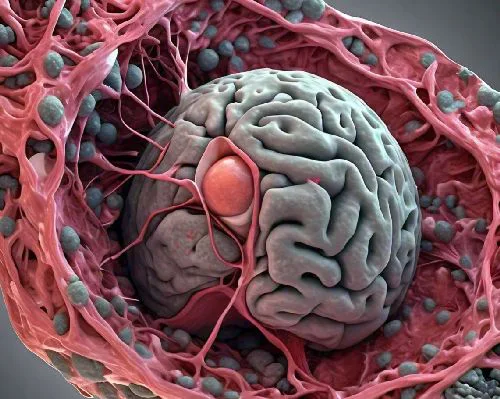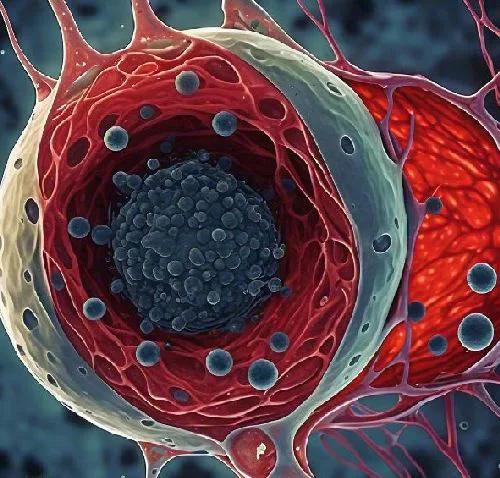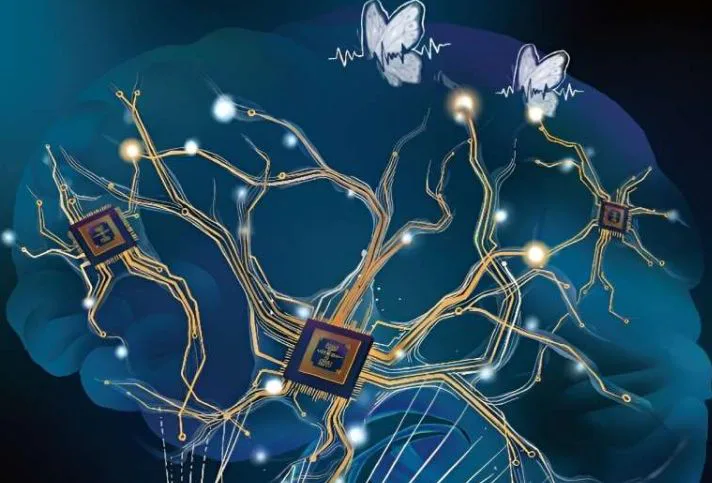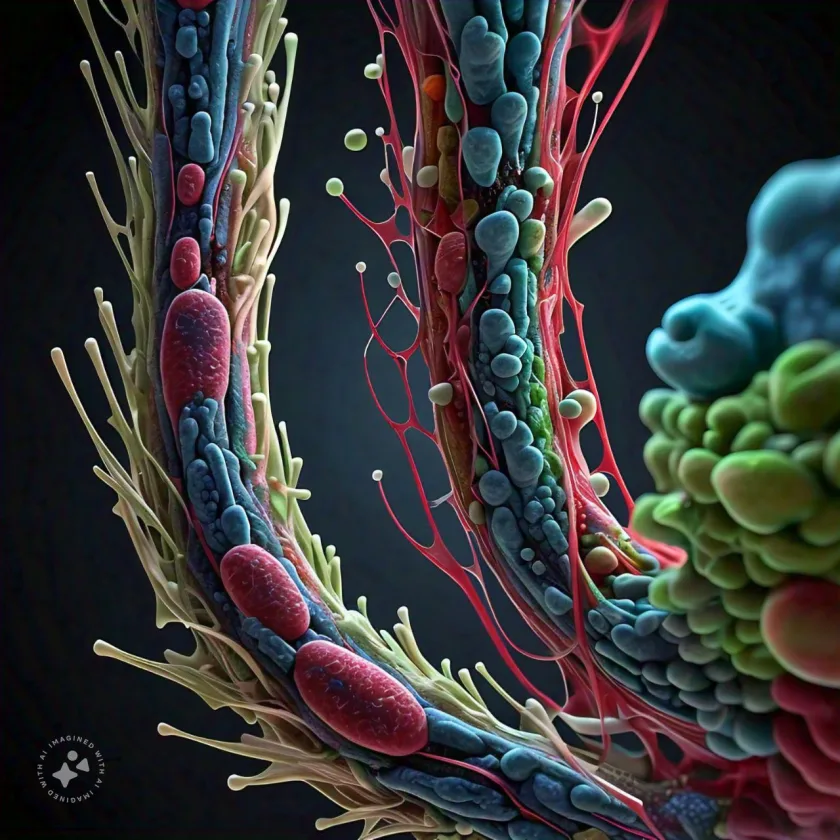
An international research collaboration led by Prof. Dr. Robert Grosse, Dr. Libor Macurek, and Dr. Zdenek Lansky has uncovered a new mechanism of crosstalk between microtubules and the actin cytoskeleton during cell division.
They revealed unique characteristics of the previously unexplored protein FAM110A, enhancing understanding of critical processes related to developmental disorders and cancer.
During the cellular division, a structure called the mitotic spindle makes sure that genetic material is properly separated or segregated into the two daughter cells. These spindles resemble tube like structures and so they are named as microtubules. These microtubules are dynamic, and are made of tubulin proteins.
These microtubules provide a framework for chromosome alignment and separation.
Chromosome Alignment:
- Microtubules attach to chromosomes at their centromeres (specialized regions)
- Chromosomes are positioned at the cell’s equator, ready for separation
Chromosome Separation:
- Microtubules contract and pull sister chromatids apart
- Separate chromosomes are moved to opposite poles of the cell
Having said that, there is also an ongoing debate among scientists regarding the role of another type of cytoskeletal structure: actin microfilaments. These tiny structures are extremely thin and made up of flexible fibers of actin proteins. Generally, these fibers assist in the following roles:
- maintaining cell shape
- enabling cell movement
- facilitating intracellular transport
What is the Difference between Microtubules and Actin Microfilaments?
Both – microtubules and actin microfilaments – structures are part of the cell’s skeleton and essential in cellular functions.
Microtubules are thick, tube-like structures. They help with moving things around inside the cell and are crucial during cell division.
While, actin microfilaments are much thinner and flexible. They are involved in muscle contractions and cell movement.
In simple words, if a house is a cell, then microtubules are the steel beams used to create the main framework, providing strong support and shape. On the other hand, actin microfilaments would then be the smaller wooden beams and nails used for finer details and adjustments in the structure, giving flexibility and enabling intricate design.
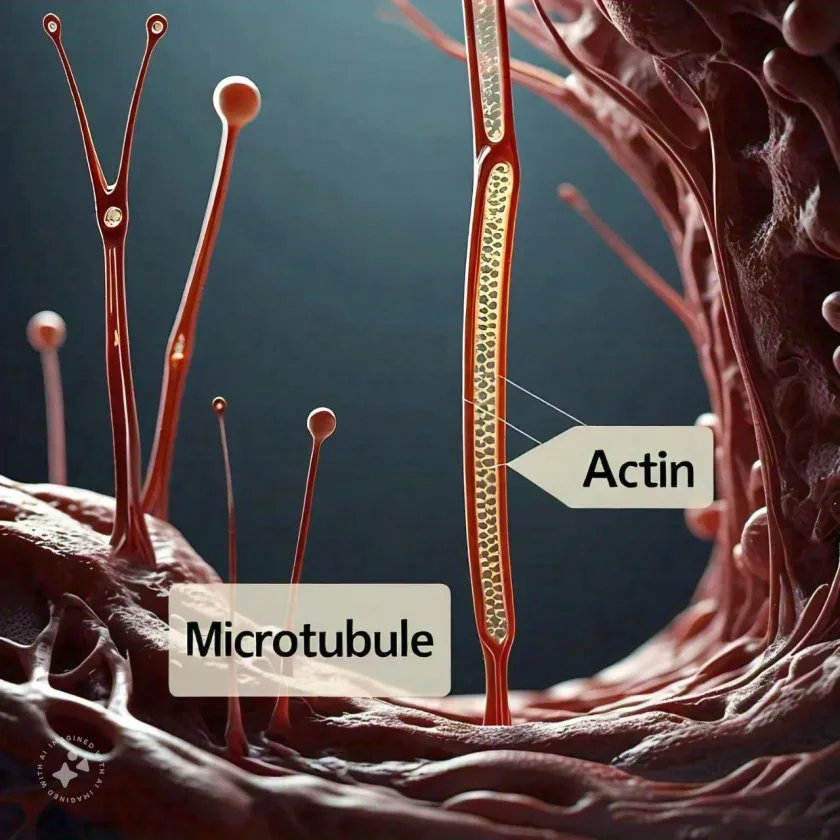
Actin Filaments and FAM110A Crucial for Proper Cell Division
Until now, scientists used to think actin filaments just helped separate daughter cells at the end of cell division. Actin’s role during mitosis has been ignored. It is mainly involved in the process where a single cell divides into two.
Now, recent research show that a protein called FAM110A can connect actin and another cell structure called microtubules at different ends. This happens to be the point of contact at the cell’s spindle apparatus, which helps in cell division. Microscopic images showed that actin filaments form around these spindle poles and help guide the microtubules’ growth.
In the absence of FAM110A this actin formation didn’t go well. In fact, it caused problems in how chromosomes split up.
This proved the critical connection between actin filaments and microtubules during cell division. Additionally, it opens new research paths to understand how this process prevents genetic issues and cancer.
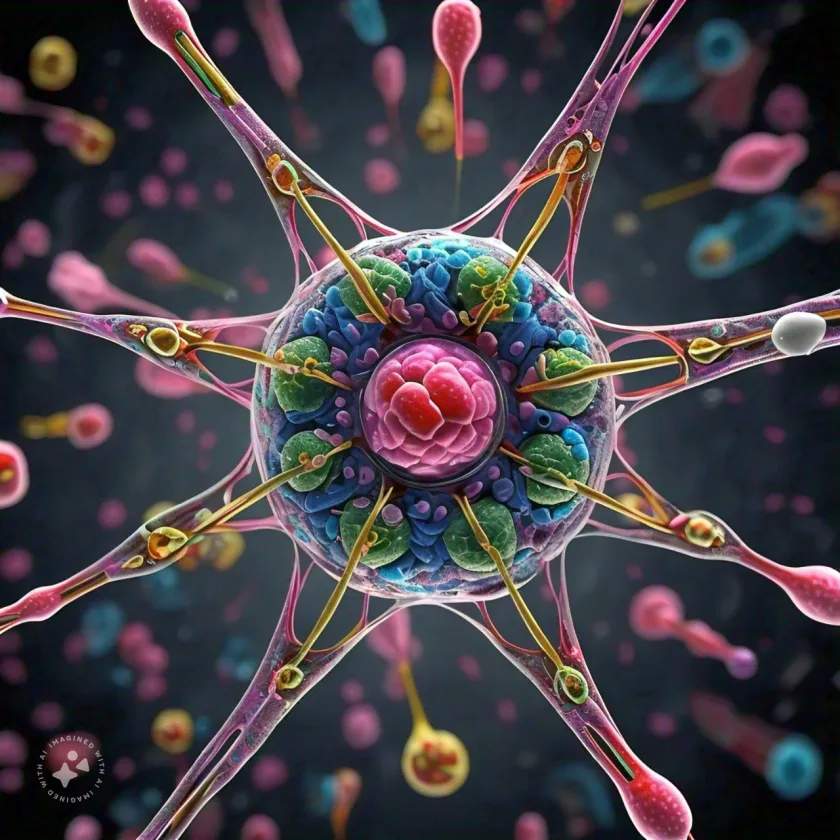
Takeaway
The critical connection between actin filaments and microtubules offers a deep insight into the mechanics of mitosis especially when it comes to spindle dynamics and chromosome segregation.
Since improper cell division can lead to cancer, understanding this mechanism opens up new avenues for cancer research.
Additionally, chromosome mis-segregation leads to certain genetic disorders. Knowledge of the cell division process may help identify the pain points and develop targeted interventions to prevent or correct these errors.
The protein FAM110A and its associated pathways could also become targets for new drugs designed to correct or inhibit faulty cell division. Thus, it’ll assist in providing more precise and effective treatments for various diseases, future research and potential medical advancements.

